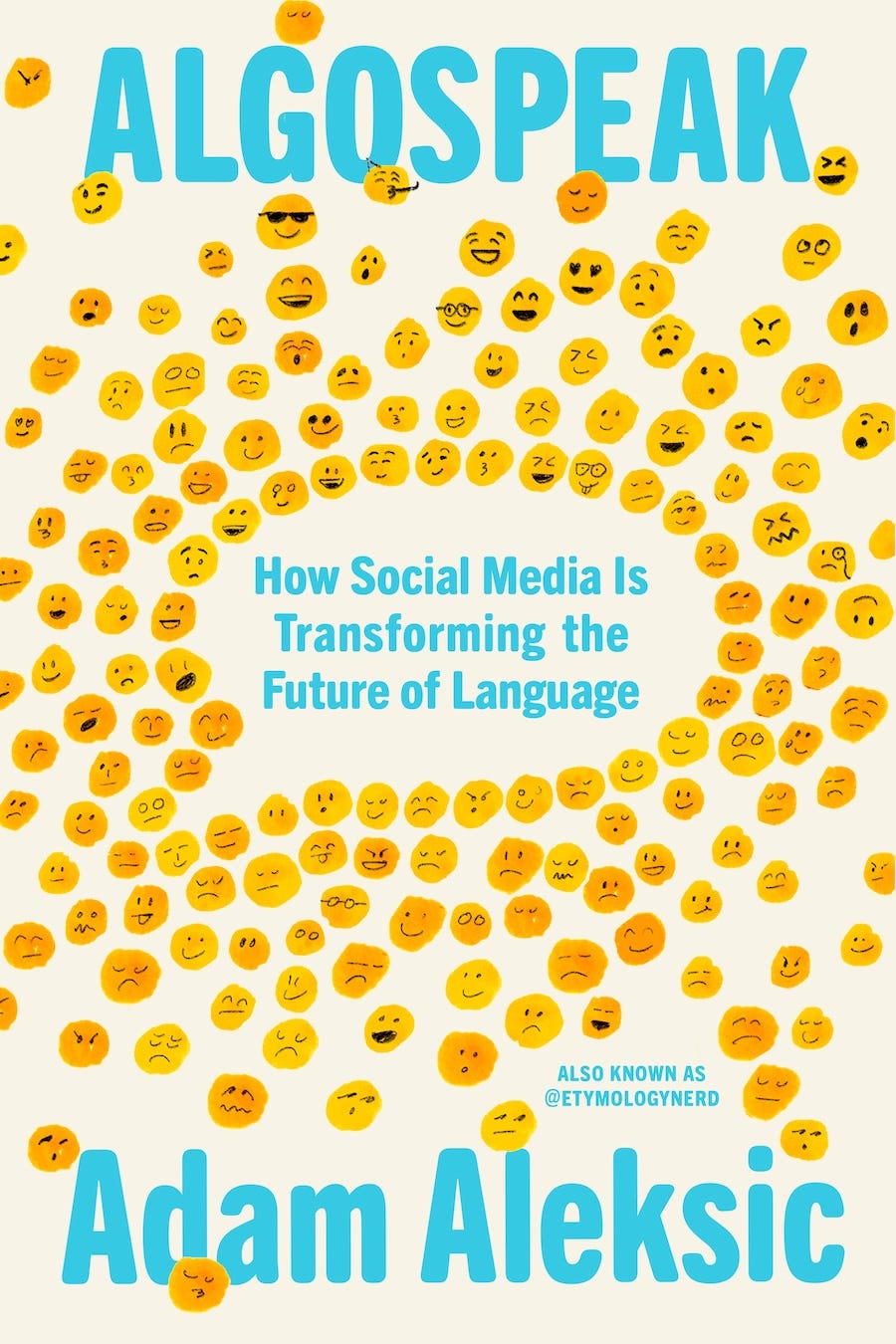Humans love simplicity
Linguist Adam Aleksic on language and storytelling in the age of social media, algorithms, A.I., and Italian brainrot
Join us today, Tuesday, July 15, at 1:30 p.m. Eastern, for a special Book Club talk with Suleika Jaouad. Watch on desktop at The Ink or join us from a phone or tablet with the Substack app.
Are you all caught up on Italian brainrot?
Here at The Ink, we weren’t. So to understand the meaning of Ballerina Cappucina and Tralalero Tralala (that shark with shoes in the image above), we reached out to the linguist Adam Aleksic.
Aleksic, better known as The Etymology Nerd, is a linguist, online content creator, and the author of a Substack newsletter about language in the age of social media. He’s a leading expert in understanding how the technology of our times has transformed and is still transforming the way we speak and think, and in explaining it within the online communities where, increasingly, language change happens.
He’s collected his on and offline insights in a new book, Algospeak: How Social Media is Transforming the Future of Language, which explores the evolution of communication in the age of the algorithm, and what it means for humanity.
We talked to Aleksic about what’s new (and what isn’t) about the way language has changed within online communities, how human creativity persists in the most highly commercialized spaces, how filter bubbles really work, why a pushback against algorithmic media and A.I. might change networked communication, and how the most basic human drives — the need to make sense of the world through storytelling — point the way to the future.
You’ve been studying the way social media has been shaping human communication, and I was thinking a good way to start would be to explore this platform we’re on right now, the newsletter, a format you don’t get into in the new book.
So as a Substack writer myself, the whole idea is that the medium is shaping how we're communicating with each other. And it's something I think about a lot when writing the book or in writing the Substack, which is really interesting, because it's one of the few platforms where — like when I'm speaking to you right now — it's one person sending something to another person.
But elsewhere, when it's through the algorithm, it's one person to the algorithm, then the algorithm reinterprets. The algorithm then decides to resend it to a potentially different audience. It might not even reach you if that was my intent. Substack is fascinating because it's one of the few modern examples of social media where we have direct access.
We have those emails. I think there's a general cultural undercurrent pushing away from algorithmic media as people are getting more aware of some of these things that I raise in the book. And yeah, I think there's something interesting going on with using Substack as an analogy.
That's interesting, because at the same time that there’s the burgeoning societal counterforce, there's also this increasing algorithmization going on, across all of the software and media we use. I think of the large language models — this is where the investment is going.






